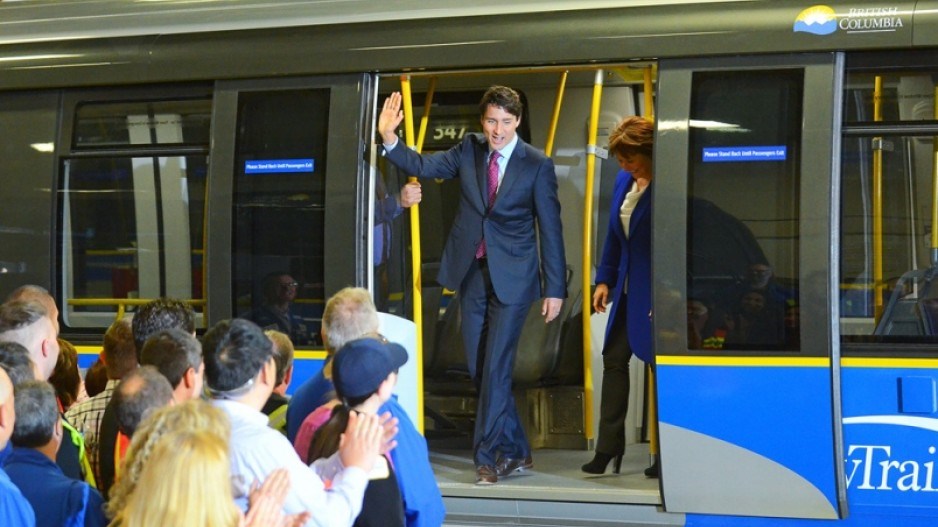Start digging
The announcement last week of $1.4 billion in federal funding for rapid transit in Surrey and Vancouver was a sunny way for Prime Minister Justin Trudeau to begin September, just days after a court ruling saw him announce plans to find some way to build the stalled Trans Mountain pipeline – now a project owned by taxpayers – “the right way.”
While transit expansion has faced its own hurdles in Metro Vancouver, including a referendum on a new tax to fund line development, local governments and TransLink pledged $1.2 billion for the work and the province staked the lion’s share at $1.8 billion.
While rising construction costs dog other projects, the total of more than $4.4 billion is enough to start work on what Vancouver applauded as the prospect of “fast, frequent and reliable SkyTrain service to one of the busiest destinations in the region” – the Broadway corridor (as far as Arbutus Street, anyway).
Now begins the hard work of planning rather than dreaming about the projects, including development of a comprehensive city plan for the corridor and design work for station sites, most of which have yet to be secured in advance of construction beginning in 2020.
TransLink declined comment on site acquisition plans last week, citing fears of sparking speculation in the corridor. It opted not to update information provided in February 2016, indicating that it had not bought land along Broadway for station development.
“We do own 1909 West Broadway, which is currently a revenue property, but may be used in future as staging space or project office when the Broadway project proceeds,” TransLink said at the time.
Keeping quiet doesn’t stop others from doing deals, however.
This column has regularly noted deals in the Broadway corridor that anticipated the new transit line’s approval, and Vancouver councillors approved development contribution expectations in June of up to $425 per square foot, specifically aimed at curbing speculation in the area.
Vancouver template
Vancouver is the template for a makeover of Holt, Renfrew & Co. Ltd. locations across Canada at a cost of approximately $400 million.
Holt Renfrew’s store in Pacific Centre enjoys a prominence that has made it a key draw at the mall, and it has seemingly been in an ongoing makeover process for five years despite predictions of retail’s demise by digital. The last two years have seen it add 40,000 square feet, however, with more than 75 brand boutiques.
Now, the company will expand Holt Renfrew Ogilvy in Montreal to more than 250,000 square feet, making it the largest in Canada, while smaller investments are planned for two stores in Toronto.
“Holt Renfrew’s actions are indicative that retail is not a dying, but an evolving sector, and transformative measures are required in order to keep up with market changes,” reports Colliers International’s Toronto-based Private Capital Investment Group.
It’s not just luxury retailers that are expanding.
CoStar Group Inc. reports that with retail vacancies in Metro Vancouver dropping to 2.8 per cent and the average net asking rent up 21.4 per cent over the past year, new construction now accounts for 2.5 million square feet (a million more than last year) and represents 2.4 per cent of existing inventory.
CoStar says tenants will welcome the new space, and James Smerdon, vice-president and director, retail consulting, with Colliers doesn’t doubt it.
Commenting last week as Amazon.com Inc.’s market capitalization punched through $1 trillion, he said demand for retail space continues unabated.
Tsawwassen Mills is one example of how new space is finding a market.
“[It] was not 1.2 million square feet that had to be absorbed all at once, at a stabilized sales productivity,” Smerdon said. “Instead, the mall itself started at a fairly low sales productivity of probably well below $500 per square foot of gross leasable area, but has grown steadily with regional demand.”



